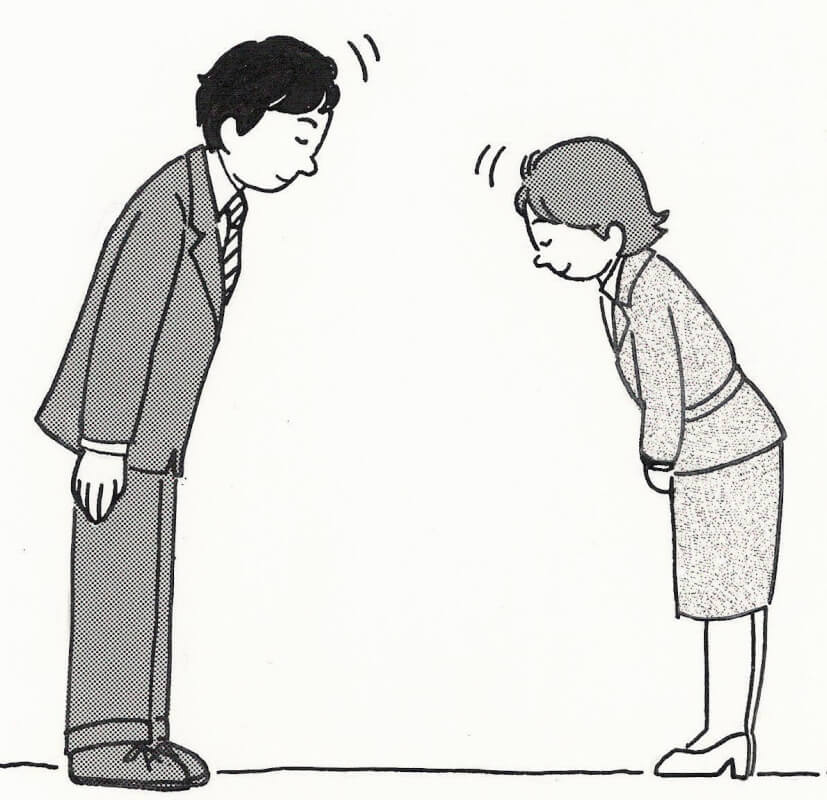Disclaimer before I begin, job positions and companies can vary in terms of recruitment process. This post aims to cover a “typical” example of an interview in Japan for an office-based position (for a foreigner) but does not claim to hold true for all instances.
Here we go.
Step 1: Preparation
Depending on your Japanese skills, you may or may not be hyped up to speak Japanese at an interview. Even if you are applying for a job where Japanese is not necessarily crucial (and the written test is available in English), be prepared for an interview conducted entirely in Japanese.
Some external recruiters may tell you the company is OK with an English interview but more than once, I have heard friends complaining that eventually, the interview was done wholly in Japanese. So at the very minimum, try writing a self-introduction script (自己紹介) and practise it with a friend. In some cases, the interview begins in Japanese and switches to English only when the interviewer feels that you may have more to add which you are unable to do in Japanese.
Step 2: Pre-interview
First impressions are important everywhere in the world, but probably more so in Japan. You are likely to be scrutinised down to any marks on your shoes. If you have spent some time in Japan, you probably already realised that office workers are always dressed immaculately.
- Dress appropriately for the interview.
- Men, in most other cases, are expected to have a well-fitted suit, with proper shoes and a plain tie.
- For women, nothing too revealing (e.g. cleavage or straps), no open footwear and no fancy accessories. Skirts are almost always a must. For both genders, keep to dark, plain colors like black or gray.
- Your clothes should be pressed, clean and not have any weird smells!
- Hair color. Well this cannot be helped in most cases but say if you are of Asian descent, brightly dyed hair may turn a few heads (in a negative sense).
- Try not to stand out too much with either your hairstyle or make-up.
- KEY TAKEAWAY: Try to blend in with other candidates in terms of dressing.
Interviews in Japan are often very serious in nature and all forms of distraction are frowned upon. Before leaving home or entering the office:
- Ensure that your mobile phone is turned off, or switched to silent without vibrations
- Turn off all alarms on your devices and watch
Arrive between 5-10 mins before the scheduled interview time. Nothing earlier or later unless you are told to do so. Being late is a deal-breaker and even if you have an excuse, you are usually expected to buffer for unexpected situations (i.e. reach early and hang out at a cafe). Being early may create inconveniences for the interviewer which may also not bode well for you.
If for some reason, you find that you are going to be late. Absolutely give a call and leave a memo that you will be late. Be specific about how late you will be. Also, apologise profusely over the phone and when you arrive in person.

Step 3: Greeting
When you first arrive at the office of the company you are interviewing with, there may or may not be someone waiting for you. Most likely, you would have to inform a receptionist or even use a phone at the reception to call the appropriate department/person. Again, you are likely to have to use Japanese at this point.
Here are some ways you can inform them of your presence:
Very polite way:
Translates roughly to “I am XX, the candidate who was given an interview appointment at XX time. I’m sorry to trouble you but could I be put through to Mr XXX?
In case you do not know the name of the person-in-charge, you can refer to him/her as 担当者様.
Polite way:
Translates roughly to “This is XX who is here for an interview. I would like to ask for Mr XX.”
You could try omitting the second part of the above sentences (if you find them too long to memorise) as the other party usually will get the point right away. If the above are too difficult to handle, you could try:
Translates roughly to: “I am XX who is here for an interview.”
Don’t forget to thank them when they help you.
When entering the interview room:
- Before entering, knock 3 times on the door
- Enter only when you get a response from the other side
- Open the door gently, bow and say 失礼します(失礼いたします) before entering
- After entering, depending on the layout of the room, you can either introduce yourself first or walk to the chair before introducing yourself ([Your name]と申します、よろしくお願いします)
- Sit only when told to do so, an remember to say 失礼します(失礼いたします) before you sit
- If you have a bag or briefcase, put it on the floor against the chair
If you are in the room before the interviewer, be sure to stand up when the interviewer enters (they will usually knock first, giving you time to react).
Step 4: Body language and response
During the interview, the interviewer would be also taking notes about your general behaviour and the way you carry yourself. So do make a good impression.
Do’s:
- Bow properly. If the other party bows deeply, you cannot get away with a shallow bow.
- Sit straight up and try not to lean on the chair. It is meant to be physically tough.
- For men, you should make a fist and rest your hands above your knee. For women, your fingers should be straightened, and rest your hands above your knee.
- Look at the interviewer as much as possible. One tip I read was to look at their mouths when they are speaking and look into their eyes when you want to convey a strong message (when you are talking about your strong points for example).
- If there are multiple interviewers, give your attention to the interviewing who is asking the question
- When the interviewer is explaining something, gently nod periodically to show that you are following him/her. An occasional [なるほど] may also be appropriate depending on circumstances.
Don’ts:
- Do not look around restlessly or be distracted by things in the room
- Do not keep looking down
- Do not shake or cross your legs
- Do not adjust your hair, glasses, etc, unless absolutely necessary. Keep your hands on your knees and out of sight.

Step 5: Answering questions
Here are some questions that are popular with interviewers:
- Why did you choose to come to Japan?
- Tell me about your goals and aspirations
- Do you intend to work in Japan for the rest of your life?
- What are your strengths and weaknesses?
Every question is an opening for you to showcase your interest or skills. Try not to answer with single word responses like yes or no.
Step 6: Questions from your part
Even if you have no real questions, be sure to prepare some in advance. You will almost certainly be given an opportunity towards the end of the interview to ask questions of your own.
What NOT to ask:
- Sensitive questions especially those that question whether a company is doing the right thing
- Things that have already been told to you, are listed on the job brief, or otherwise obtainable from the company’s website
- If it is only the first interview, you may want to refrain from asking about remuneration
Step 7: Finishing up
- When the interview is complete, stand up, bow and thank the interviewer
- Just before leaving the room, bow again while facing the interviewer
- Leave the room while facing the interviewer and close the door gently
Other tips:
- If you are not comfortable with keigo (敬語), stick to polite form (丁寧語). It is better to use polite form correctly than to use honorifics wrongly.
- Always bear in mind that when speaking in an interview, you are addressing someone of a higher status. Use appropriate words and tone.
- When walking from point to point, don’t get overly-excited and start peeking at every part of the office.
- Many companies have a written (or computerised) test that checks your basic ability in math or logical thinking. For more technical positions, you may get programming questions or more advanced math like calculus or probability. This is usually done before the first face-to-face interview.
- When discussing your weaknesses, do not just point them out. Be sure to explain how you cope with them or try to improve on them.
Feature image: Ausgemeetet (CC license)





